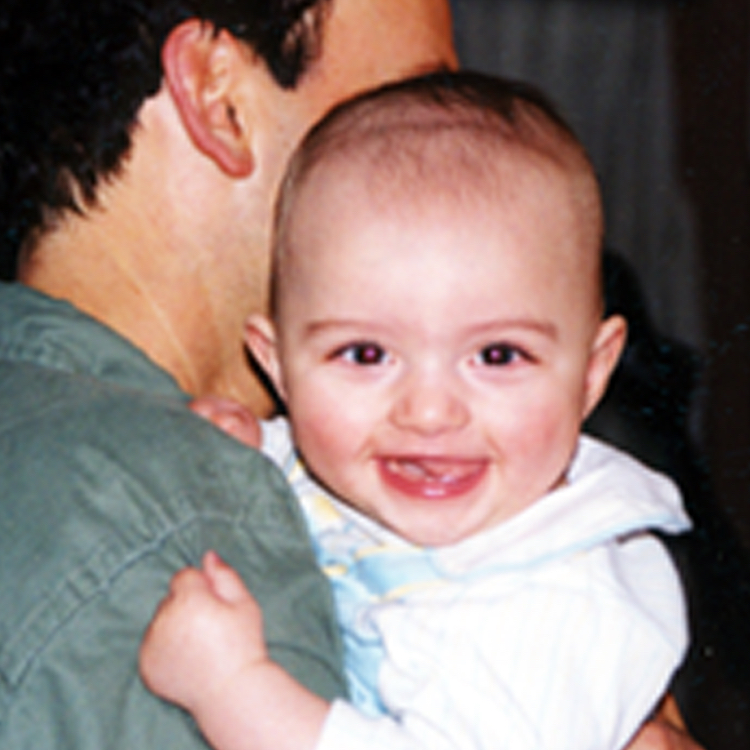Family Voices — Ethan’s Story
Ethan died when he was strangled in a portable crib. He was eight months old.

Submitted by his mother, Laura
My husband and I used the Baby Trend Home and Roam portable crib since Ethan’s birth; first to protect him from his older sister Rachael (only 22 months his senior) and then because it was his place to be able to see the world. We have no notion who gave it to us. We figured that hand-me-downs were safer than new because they were “kid tested.” We thought that since other kids had used them and were fine, it must be safe.
He was strangled when the top rail collapsed around his neck. I was stunned to find out afterwards no testing was done on children’s products except by the company who makes them.
We miss Ethan every day. No one will be as happy or amazing to us as he was as our son.
What’s Happened Since Ethan’s Death?
In a 2002 CPSC report, 156 crib-related deaths were reported to CPSC. Of these deaths, 17 involved non-full sized or portable cribs and 77 involved cribs of unknown type. Ethan was one of the 17 deaths involving portable cribs. Many of these deaths were as a result of the manufacturing malfunctions that would result in the child becoming entrapped in the side of the crib or strangled.
In 2008, President Bush signed the Consumer Product Safety Improvement Act which required strong standards for children’s products and that all durable children’s products come with product registration cards so that the owners can learn of recalls directly from the manufacturer.
On February 28, 2013, a strong standard was put in place for all play yards or mesh-sided portable cribs. These new standards include sturdier mattress attachments, stronger corner brackets, and side rails that resist forming a sharp V when folded to prevent more strangulations like Ethan’s.
While the crib that killed Ethan falls under the play yard standard, the U.S. also signed into law strong standards for regular cribs. Any crib made after June 28th, 2011 will require cribs to meet tough testing standards, have improved mattress support, prohibit drop sides, and have stronger hardware and slats.
How You Can Take Action
To take action and help prevent further incidents, injuries, and deaths,
there are a number of things you can do:
- Follow the ABCs of safe sleep at every sleep time: 1) Baby is Alone and has their own separate sleep space. 2) Baby is placed to sleep on their Back, and 3) baby sleeps in a Crib, play yard or bassinet that meets the federal safety standard.
- Remove other products such as crib bumper pads, pillows, positioners, extra padding, blankets, stuffed animals, or toys from the sleep environment.
- Share KID’s safe sleep PSA.
- Report any incidents to the CPSC at SaferProducts.gov.
Check out our action steps for all children’s products here.
More Information on Cribs
Although mandatory standards exist for cribs, only recently has an effort been made to strengthen those standards and require testing and verification of new cribs. Because of these standards, all cribs must include proper assembly instructions and diagrams as well as cautionary and warning labels as required by federal law.
More information on Safe Sleep
A safe sleep environment is the one place parents and caregivers can place an infant and know they will be safe, even as the parent sleeps or attends to other things. Infants sleep safest following the ABC’s of safe sleep—Alone, on their Back and in a Crib, bassinet or play yard that meets federal standards and hasn’t been recalled. AAP also recommends babies sleep on a flat surface and unrestrained. Nothing should be in the crib except a firm mattress with a tight-fitting sheet.
View our safe sleep video to learn more about how to keep your baby safe while sleeping.
